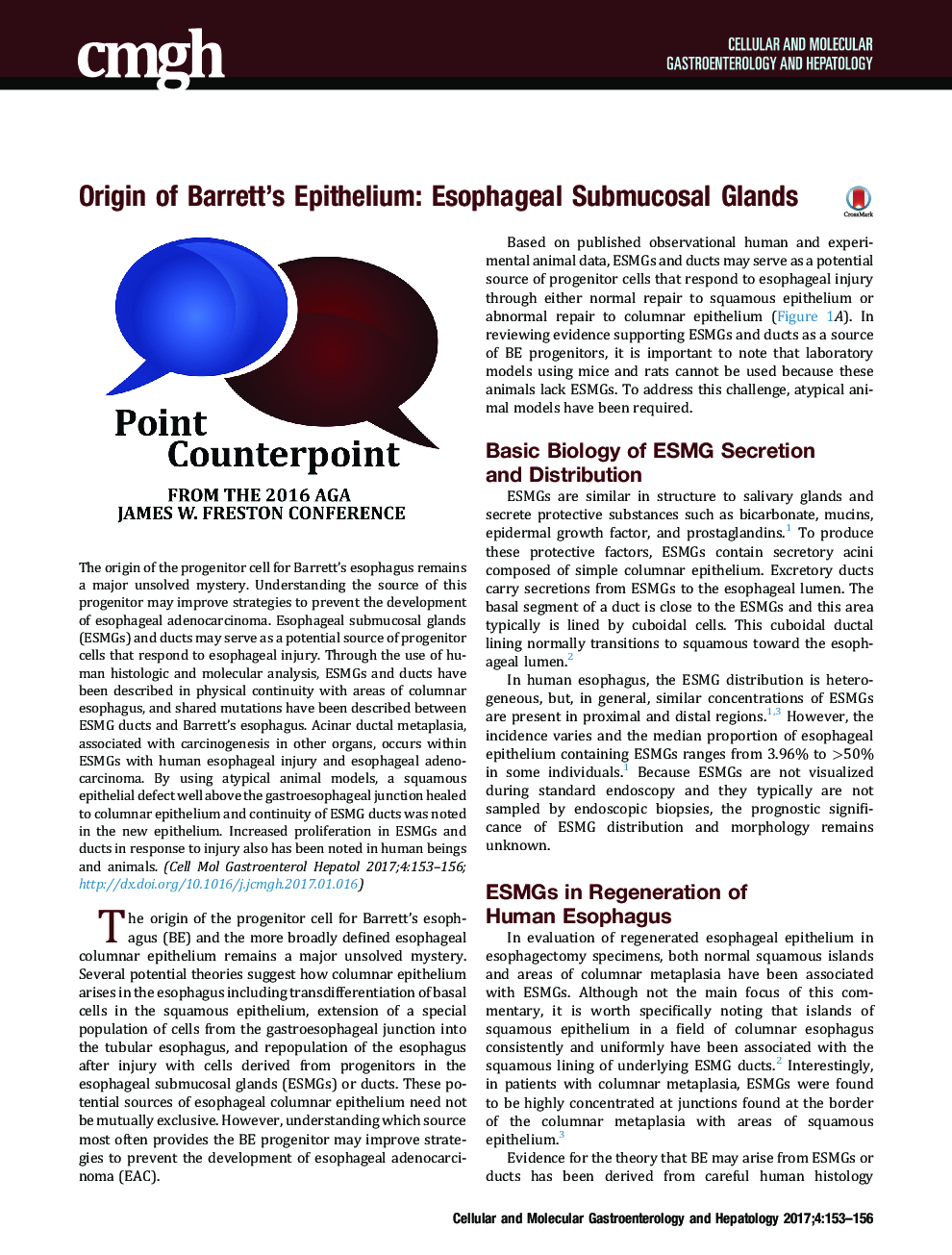| Article ID | Journal | Published Year | Pages | File Type |
|---|---|---|---|---|
| 5517173 | CMGH Cellular and Molecular Gastroenterology and Hepatology | 2017 | 4 Pages |
The origin of the progenitor cell for Barrett's esophagus remains a major unsolved mystery. Understanding the source of this progenitor may improve strategies to prevent the development of esophageal adenocarcinoma. Esophageal submucosal glands (ESMGs) and ducts may serve as a potential source of progenitor cells that respond to esophageal injury. Through the use of human histologic and molecular analysis, ESMGs and ducts have been described in physical continuity with areas of columnar esophagus, and shared mutations have been described between ESMG ducts and Barrett's esophagus. Acinar ductal metaplasia, associated with carcinogenesis in other organs, occurs within ESMGs with human esophageal injury and esophageal adenocarcinoma. By using atypical animal models, a squamous epithelial defect well above the gastroesophageal junction healed to columnar epithelium and continuity of ESMG ducts was noted in the new epithelium. Increased proliferation in ESMGs and ducts in response to injury also has been noted in human beings and animals.
